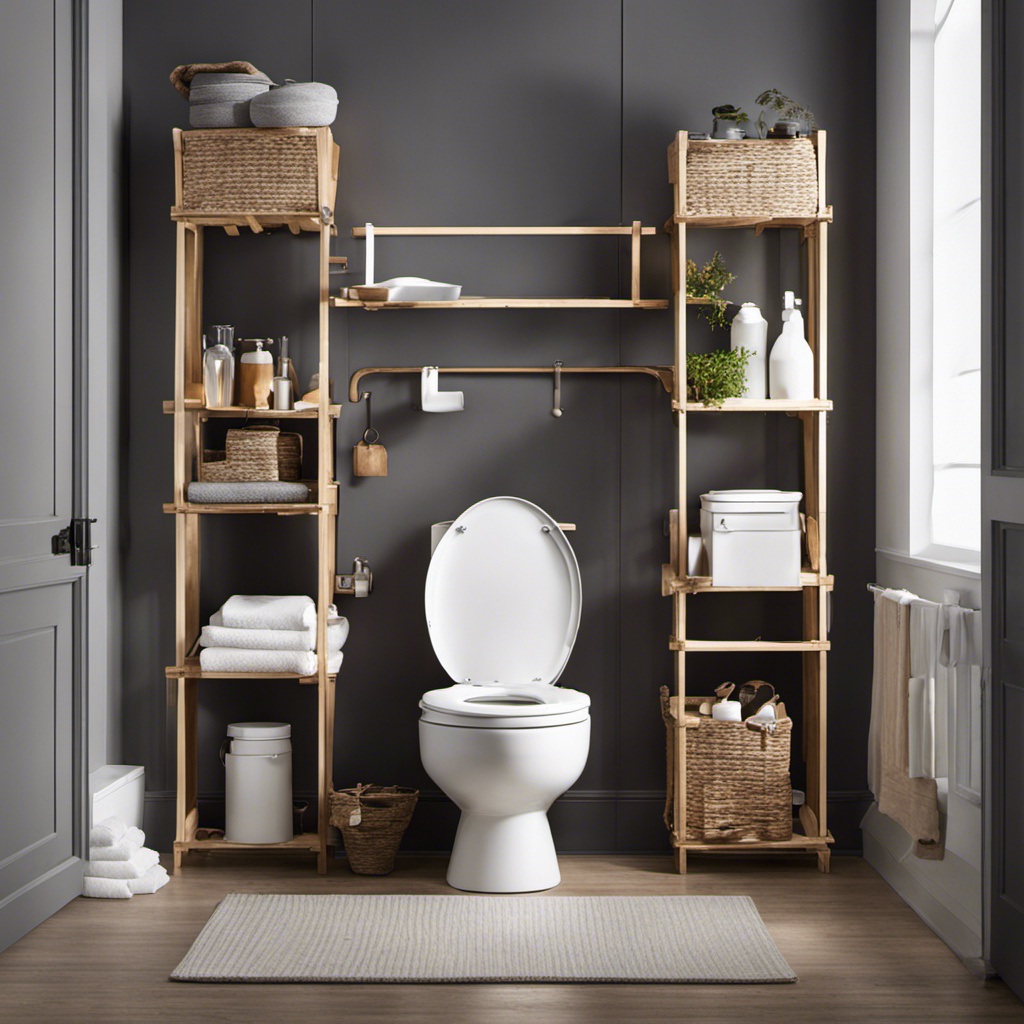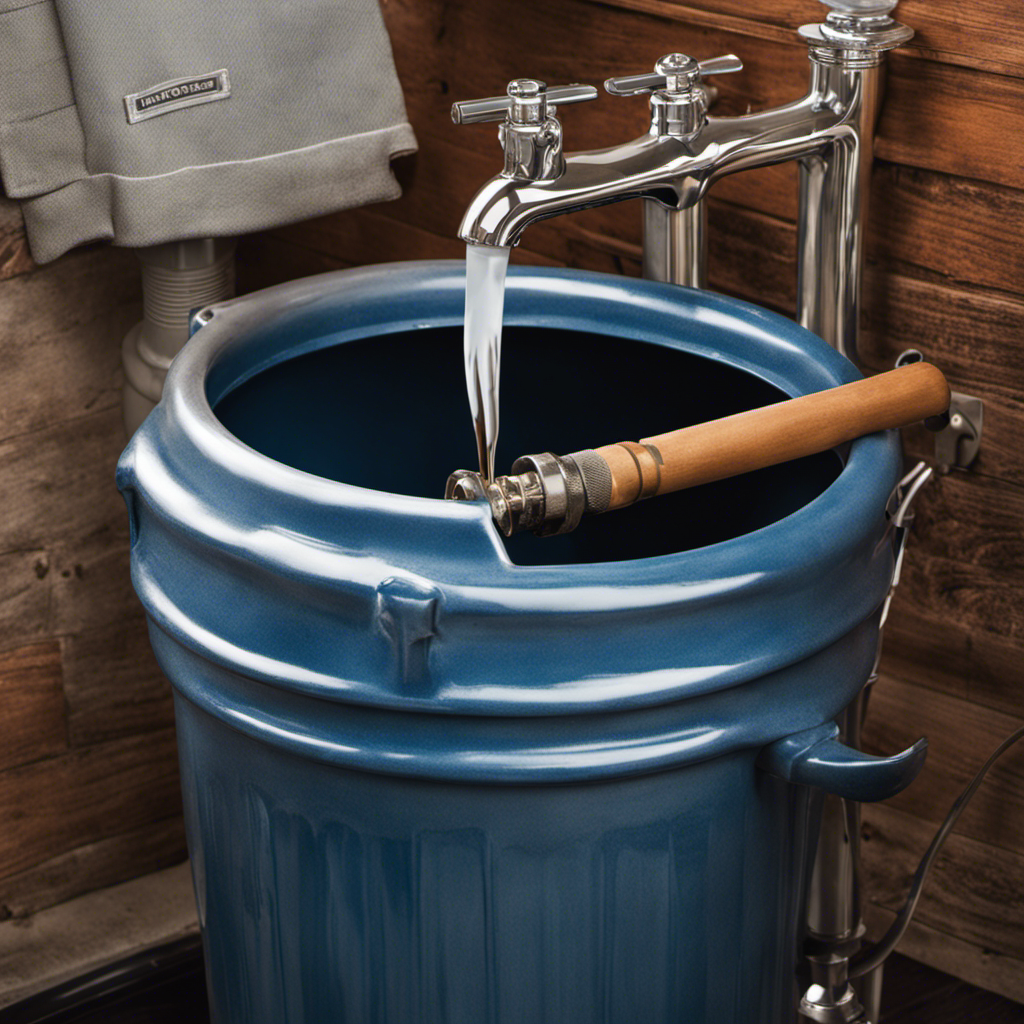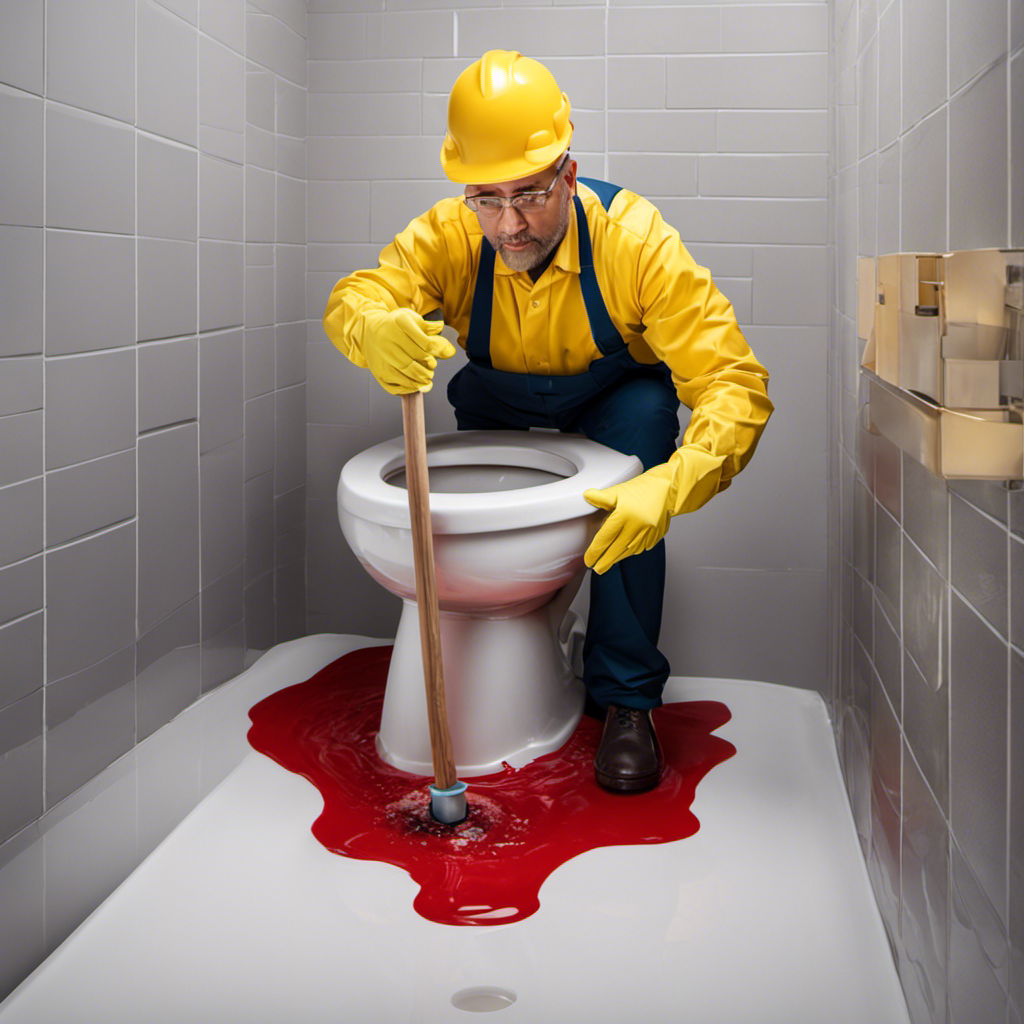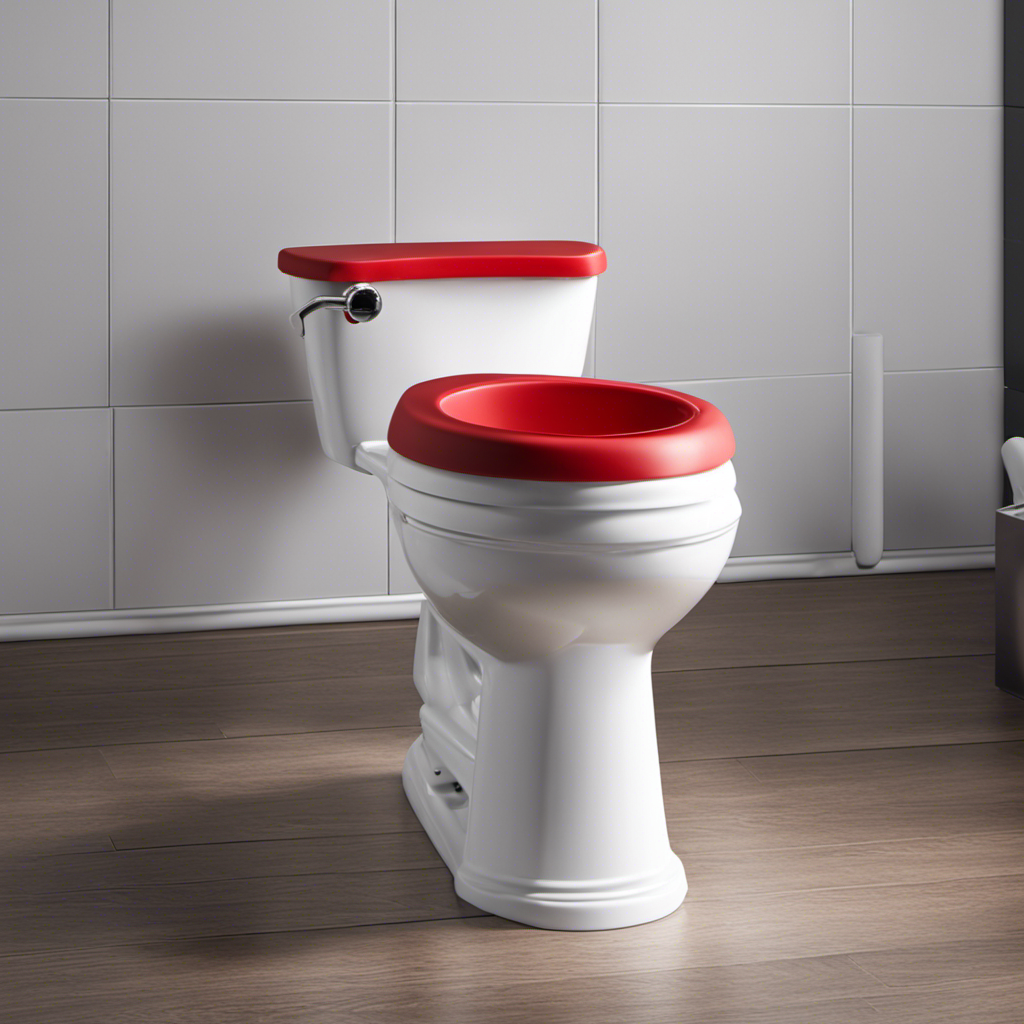So, you find yourself in a predicament. You’ve got a toilet that’s seen better days, and now you’re left wondering how on earth you’re supposed to get rid of it.
Well, fear not, my friend, for I am here to guide you through the process of disposing of a toilet with ease. In this article, I’ll walk you through the necessary safety precautions, the steps to drain and disconnect the toilet, and the proper packaging and transportation methods.
Trust me, disposing of a toilet has never been so thrilling!
Key Takeaways
- Wear thick gloves and safety goggles to protect against cuts and debris.
- Lift and carry the toilet using proper techniques to avoid back strain.
- Use sturdy packaging materials and label each package to indicate its contents and handle with care instructions.
- Explore recycling facilities or organizations that accept donations of used toilets for proper disposal.
Safety Precautions
Before you begin, it’s important to take some safety precautions when disposing of a toilet.
When working with heavy and potentially sharp objects, such as toilets, it is crucial to have the essential safety equipment. This includes wearing thick gloves to protect your hands from cuts and scrapes, as well as safety goggles to shield your eyes from debris.
Additionally, it is important to watch out for potential hazards during the disposal process. These hazards can include broken porcelain, which can cause cuts, and rusty or sharp edges that may cause injury.
It is also important to lift and carry the toilet with proper lifting techniques to avoid straining your back or causing muscle injuries.
Drain and Disconnect the Toilet
To disconnect the toilet, you’ll need to turn off the water supply and remove the bolts securing it to the floor.
Before starting this process, make sure to wear protective gloves and goggles to prevent any potential injury.
Begin by locating the water shut-off valve, usually located near the base of the toilet or on the wall behind it. Turn the valve clockwise to shut off the water supply.
Next, use a wrench to loosen and remove the nuts securing the bolts to the floor.
Once the bolts are removed, carefully lift the toilet straight up to disconnect it from the waste pipe. Be cautious as toilets can be heavy.
Now that the toilet is disconnected, it’s time to move on to disassembling it for proper disposal.
Disassemble the Toilet
Now that the toilet is disconnected, you’ll need to start disassembling it for proper disposal.
This process involves carefully removing various toilet parts to ensure safe and efficient disposal. Begin by removing the tank lid and setting it aside.
Next, disconnect the water supply line from the bottom of the tank. Use a wrench to loosen and remove the nuts securing the tank to the bowl.
Gently lift the tank away from the bowl and place it in a designated area for recycling or disposal. To disassemble the bowl, remove the seat and then unscrew the bolts at the base.
Finally, separate the bowl from the floor flange. Remember to keep track of all the removed parts for the reassembly process.
With the toilet disassembled, it is now time to proceed with proper packaging and transportation.
Proper Packaging and Transportation
Once the parts are disassembled, you should securely package them and arrange for their safe transportation. Proper packaging is essential to ensure that the toilet parts remain intact during transit.
Here are some guidelines to help you with the packaging process:
- Use sturdy packaging materials such as bubble wrap, foam padding, or packing peanuts to protect the individual components.
- Place the parts in separate boxes or containers to prevent them from bumping into each other and causing damage.
- Seal the packages tightly with tape to avoid any accidental openings.
- Label each package clearly to indicate its contents and handle with care instructions.
When it comes to transportation, it’s important to consider recycling options for the toilet parts. Check with your local recycling facilities to see if they accept toilet components. If not, you can explore alternative options such as donating the parts to organizations that refurbish or repurpose bathroom fixtures.
Disposal Options
When considering disposal options for your toilet parts, it’s important to explore recycling facilities and organizations that refurbish bathroom fixtures.
Recycling options for toilet parts include facilities that specialize in recycling porcelain and other materials commonly found in toilets. These facilities can break down the parts and recycle them into new products, reducing waste and conserving resources.
Additionally, there are donation opportunities for toilet parts that are still in good condition. Organizations such as Habitat for Humanity may accept donations of used toilets that can be refurbished and reused in affordable housing projects. It’s crucial to properly research and contact these organizations to ensure that your donation meets their requirements.
Conclusion
In conclusion, disposing of a toilet requires careful adherence to safety precautions, proper disassembly, and appropriate packaging and transportation.
By following these steps, you can ensure a smooth and efficient process. Remember the old saying, ‘A stitch in time saves nine.’ This adage perfectly illustrates the importance of taking prompt action when it comes to toilet disposal, as addressing the issue properly from the beginning can prevent future complications.
Stay knowledgeable, technical, and precise throughout the process to ensure successful disposal.










